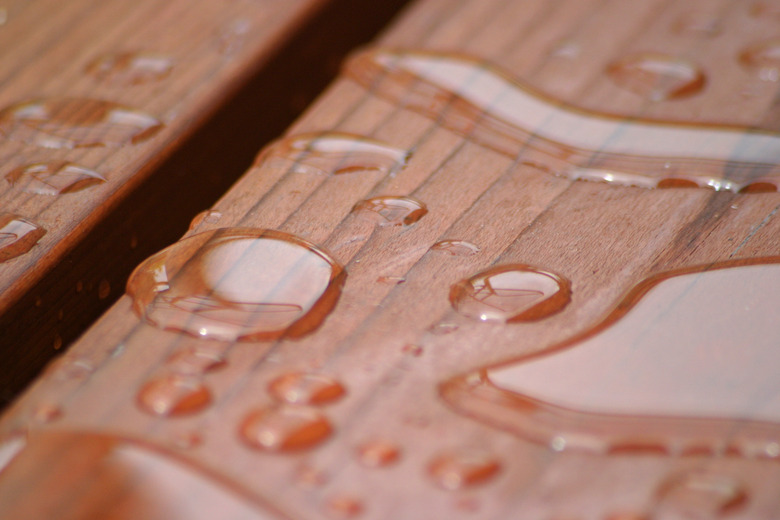Does Redwood Need To Be Waterproofed?
Even if there were such a thing as a redwood preservative, you probably wouldn't need to use it because redwood is highly resistant to the rot, fungal infections, and pests that plague many other wood species. Redwood doesn't need to be waterproofed, but that doesn't mean it doesn't need maintenance.
Like any other type of wood, redwood is vulnerable to sun exposure. When the sun's UV rays strike redwood, they decompose the cells on the surface of the wood, which in turn lose their coloration. While this doesn't make the wood any more vulnerable to moisture, it does turn it gray. If you want to prevent this and maintain the attractive tones of red, yellow, and brown, you need to apply some type of sun-blocking finish.
Tip
Redwood doesn't need to be waterproofed, but it will better maintain its appearance if you stain it with a UV-blocking stain.
Is All Redwood Equally Moisture-Resistant?
Is All Redwood Equally Moisture-Resistant?
When shopping for redwood to use for your deck, fence, or other home improvement project, you'll notice that different grades are available and that they differ in their coloration. That's because the boards with the deepest coloration and the best weather resistance come from the middle of the tree, or the heart. Sapwood, which comes from the perimeter of the trunk, is usually yellowish or whitish, but heartwood is dense and has deep red and brown tones.
Heartwood is denser than sapwood and contains more of the weather-resistant organic materials, which are known as extractives. That doesn't mean sapwood lacks these materials; they just aren't present in concentrations that are as high. Much of the lumber you would choose for a deck or similar project would be classed "con heart," which means it's a construction grade consisting of a combination of heartwood and sapwood. "Con common" is a cheaper class that is almost entirely sapwood and has little of the red coloration you expect from redwood.
Choosing Redwood for Your Project
Choosing Redwood for Your Project
Redwood was seriously overharvested during the 20th century, and because it's a slow-growing tree, supplies have dwindled, and prices have risen. These days, it's a premium building material, and a single con-heart fencing board can cost as much as $30. If you're committed to using redwood and not a less expensive alternative, like cedar or pressure-treated pine, you often have to settle for grades that contain a lot of sapwood. The result may be that your deck or fence doesn't have the deep coloration you were expecting.
Even sapwood is weather-resistant, but redwood ground contact, whether it's sapwood or heartwood, is not recommended. You usually use pressure-treated fir for deck foundations and fence posts, and you can purchase these with reddish stains that mimic the look of redwood. You can be assured, however, that the redwood you use for decking boards and fence slats will resist rot without waterproofing.
Maintaining the Appearance of Redwood
Maintaining the Appearance of Redwood
People often stain their redwood decks and fences, but the purpose is to maintain the coloration, not to protect the wood from moisture. Redwood fence stain colors can run the gamut of hues, but the best redwood stain and sealer for anyone who appreciates the natural appearance of redwood is one that gives the wood a reddish coloration. It also provides enough pigmentation to block UV radiation and prevent the wood from turning gray.
To put it in a nutshell: You don't have to apply a finish to redwood to protect it from the weather. Even sapwood will hold up in rainy and damp weather for years when left unfinished. If you want the wood to keep looking good, though, you should apply a pigmented finish, such as a semitransparent stain, and you should renew the finish every few years.
